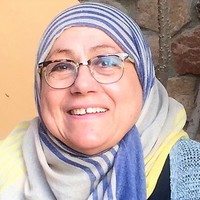
Prof. Nagwa Mohamed A . Aref
Nagwa Mohamed Mohamed Amin Aref , Ph.D
Virology, Molecular Virology, Immunology
http://faculty.ksu.edu.sa/prof.nagwaaref/pages/default.aspx
--Scholarship for Ph.D. in Plant Virology under Scientific Channel System at Hohenheim University –Institute of Plant Medicine -Stuttgart-Germany from 10/2/1981 until
5/2/1983-2/6/1984.for Ph.D. submission.
3-Sabbatical leave at Michigan State University East Lansing USA participating in the detection of plant viral disease of stone fruit trees research program 1/9/1984-11/6/1989.
4- Attending training practical condensed courses in molecular virology at Scripse Research Institute ,San Diego, USA. from 14/11/1991 -7/4/1992
5-UNDP molecular virologist Expert: Project entitled: "Engineering tomato transgenic plants Resistant for Tomato yellow Mosaic Gemini Virus" – Scripse Research Institute San Diego USA and Ministry of Agriculture. Egypt ,1990-1996.
6- Consultant"(short term) as a molecular virologist co-investigator at AGERI (Agriculture Genetic Engineering Research Center) Ministry of Agriculture. Egypt from 1/1/1990-1/4/1996.
7-Sabbatical leaves as a PROFESSOR Faculty of Science- Department of Botany& Microbiology –King Saud University –Women Students Medical Studies &Sciences Sections started from 2000 Up to Now
8-NEWS ,Exchange Visitor Professor (2007) in USA for a short-term research scholar. In Electron Imaging Center for Nanomachines, California NanoSystems Institute (CNSI), University of California, Los Angles. ,Molecular Sciences ,UCLA,CA.The scholarship (NANOTECHNOLOGY) is sponsored by King Abdul-Aziz City for Science & Technology(KACST) ,December1st _December 29th ,2007
<!-- Beginning of meebo me widget code.
Want to talk with visitors on your page?
Go to http://www.meebome.com/ and get your widget! -->
<embed src="http://widget.meebo.com/mm.swf?XNIPoZXGqh" type="application/x-shockwave-flash" width="190" height="275"></embed>
Phone: +966-1-4789585 Ext.1441
Address: WOMEN STUDENTS MEDICAL STUDIES & SCIENCES SECtIONS
Office: #530 ,bldg. #7, level 1
Phone: +966-1-4789585 Ext.1441
Fax: +966-1-4768171 & +966-1-4765598
e.mail: narif@ksu.edu.sa & nagwa_aref@hotmail.com Websites: http://drnagwaref.spaces.live.com/ & http://faculty.ksu.edu.sa/prof.nagwaaref/
MAILING ADDRESS: P.O. Box ,22452 , Riyadh ,11495 ,Kingdom of Saudi Arabia
Virology, Molecular Virology, Immunology
http://faculty.ksu.edu.sa/prof.nagwaaref/pages/default.aspx
--Scholarship for Ph.D. in Plant Virology under Scientific Channel System at Hohenheim University –Institute of Plant Medicine -Stuttgart-Germany from 10/2/1981 until
5/2/1983-2/6/1984.for Ph.D. submission.
3-Sabbatical leave at Michigan State University East Lansing USA participating in the detection of plant viral disease of stone fruit trees research program 1/9/1984-11/6/1989.
4- Attending training practical condensed courses in molecular virology at Scripse Research Institute ,San Diego, USA. from 14/11/1991 -7/4/1992
5-UNDP molecular virologist Expert: Project entitled: "Engineering tomato transgenic plants Resistant for Tomato yellow Mosaic Gemini Virus" – Scripse Research Institute San Diego USA and Ministry of Agriculture. Egypt ,1990-1996.
6- Consultant"(short term) as a molecular virologist co-investigator at AGERI (Agriculture Genetic Engineering Research Center) Ministry of Agriculture. Egypt from 1/1/1990-1/4/1996.
7-Sabbatical leaves as a PROFESSOR Faculty of Science- Department of Botany& Microbiology –King Saud University –Women Students Medical Studies &Sciences Sections started from 2000 Up to Now
8-NEWS ,Exchange Visitor Professor (2007) in USA for a short-term research scholar. In Electron Imaging Center for Nanomachines, California NanoSystems Institute (CNSI), University of California, Los Angles. ,Molecular Sciences ,UCLA,CA.The scholarship (NANOTECHNOLOGY) is sponsored by King Abdul-Aziz City for Science & Technology(KACST) ,December1st _December 29th ,2007
<!-- Beginning of meebo me widget code.
Want to talk with visitors on your page?
Go to http://www.meebome.com/ and get your widget! -->
<embed src="http://widget.meebo.com/mm.swf?XNIPoZXGqh" type="application/x-shockwave-flash" width="190" height="275"></embed>
Phone: +966-1-4789585 Ext.1441
Address: WOMEN STUDENTS MEDICAL STUDIES & SCIENCES SECtIONS
Office: #530 ,bldg. #7, level 1
Phone: +966-1-4789585 Ext.1441
Fax: +966-1-4768171 & +966-1-4765598
e.mail: narif@ksu.edu.sa & nagwa_aref@hotmail.com Websites: http://drnagwaref.spaces.live.com/ & http://faculty.ksu.edu.sa/prof.nagwaaref/
MAILING ADDRESS: P.O. Box ,22452 , Riyadh ,11495 ,Kingdom of Saudi Arabia
less
Related Authors
Adriana Garriga-López
Florida Atlantic University
Colin Robinson
University of Leeds
James Elkins
School of the Art Institute of Chicago
Arun Shanker
Central Research Institute for Dryland Agriculture
James McDonald
Bangor University
Siddharth S Saxena
University of Cambridge
Jayjit Majumdar
University of Kalyani
Prof. Dr. Moustafa Moharam
Sohag University
Dr. Sujoy Das
Central leather research Institute
Natasha Myers
York University
InterestsView All (68)
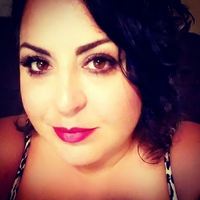
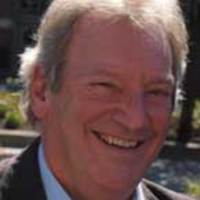

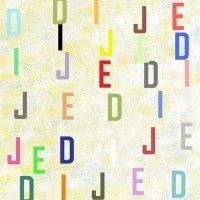
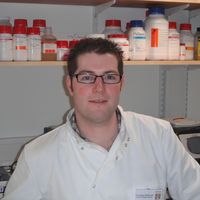



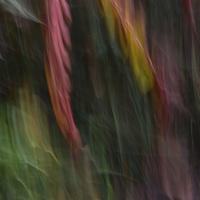
Uploads
Books by Prof. Nagwa Mohamed A . Aref
Teaching Documents by Prof. Nagwa Mohamed A . Aref
Papers by Prof. Nagwa Mohamed A . Aref
The efficacy of three different colostra injected intraperitoneally in rats was studied by measuring the induced inflammatory cytokines. In vivo experiment Camel colostrum, Bovine colostrum, and a combination of both (Mix) were used for triggering the correct balance survival in the rats. Two pro-inflammatory cytokines ( INF-ɤ and TNF-α ) were used as indicators by ELISA and IL-10 levels were assessed as an anti-inflammatory cytokine. Each pathogenic bacterium varied in its induction in vivo, and survival percentage for three colostra. The best survival effect was found in camel colostrum and mix for all bacteria (83% in E-coli -100% in MRSA). The immunomodulatory effect of pro-inflammatory INF- ɤ cytokines with three tested colostra varied due to the bacterial species. Mix colostrum triggered an efficient immune response as compared to the bovine or camel colostrum. In E. coli bacterial infection with bovine and with mixed colostrum, IFN-ɤ elevated up to 0.12 Pg. /ml in the Mix but was 0.06 Pg. /ml in Bovine. At the end of the trial(L); IFN-ɤ exhibited a steady level of the immune response in mix treatment (93.750 Pg. /ml) in colostrum mix only as well as the same value was 93.750 Pg. /ml in Bacteria with Mix. In Pseudomonas aeruginosa; Mix colostrum was noticed to be a vital element for inducing INF-ɤ alone with 17.82 Pg/ml during the study time(M). Moreover, Mix with bacteria treatment showed a higher titer of IFN-ɤ after primer stimulation having 32.22 Pg/ml. IFN-ɤ in Staphylococcus aureus raised up to 78.10 Pg/ml in mix Colostrum and bacteria compared to 17.82 Pg/ml in mix colostrum. In bacterial infection with bovine colostrum, IFN-ɤ elevated only to 23.76 Pg/ml. MRSA also indicated a high value of IFN-ɤ that raised to 78.13 Pg/ ml in mix Colostrum and bacteria. E- coli for both Camel and mix colostrum stimulate TNF- α with various levels. The highest enhancement was for camel colostrum in all treatments which had 0.56 Pg/ml, 0.57 Pg/ml, and 0.60 Pg/ml for Colostrum, Bacteria, and Colostrum with Bacteria respectively. In Pseudomonas aeruginosa, the highest enhancement of TNF- α was detected in camel colostrum in all treatments compared with a mix which had 0.56 pg./m, 1.54 pg./m, and 1.00 pg./m for Colostrum, Bacteria, and Colostrum with Bacteria respectively. P. aeruginosa, triggered TNF- α after 24 h with 1.171 pg./m. compared to 0.828 Pg./m with colostrum. The most efficient value was noticed with colostrum and bacteria (8.931 pg. /m). In the case of S. aureus, the highest enhancement was for camel colostrum in all treatments compared with a mix which had 0.56 pg./m., 1.21 pg./m and 0.50 pg./m for Colostrum, Bacteria, and Colostrum with Bacteria respectively. For MRSA, TNF- α raised up to 0.56 Pg. /m for camel Colostrum compared to 0.03 Pg./m in mix colostrum. The best-elevated value of TNF- α indicated 0.69 Pg. /m with camel colostrum injected with the MRSA. IL-10 was also estimated and varied according to the induction of each bacterial infection. In E.coli, Mix colostrum alone triggered the immune response more than the other treatments which were 83.30 Pg. /m. The most increased one in the mix was in Bacteria with colostrum that had 1000.0 Pg. /m at the last period. IL-10 started to increase after 24h in the bacterial infection with 80.3080 Pg. / m. Moreover, colostrum continues to induce IL-10 from 7days-25 days up to 166.60 Pg./m. In the presence of P. aeruginosa, Mix colostrum alone was noticed to trigger the immune system by raising IL-10 with 83.30 Pg/ml during the study time. While S.aureus with colostrum mix treatment and Colostrum with Bacteria indicated the same immune reaction that was 166.63 in (M: 7-25 days) Pg/ ml and raised up to 750.00 Pg/ml until for one month. MRSA in Colostrum mix triggers the immune system for IL-10 during the extended period the same as S.aureus. And Bovine colostrum activated IL-10 only after 24 h. 0.810 Pg/ ml.
The activity of IFN-ɤ increased twice to 0.837 pg. /ml in Camel colostrum compared to Hep-surface antigen vaccine that has 0.477 pg. /ml. IL-10 was 0.125 with immunization by Hep-B- Surface Antigen but interestingly was 0.947 pg. /ml by camel colostrum immunization. The activity of TNF- α concentrations was 0.813 for Hep-surface antigen vaccine and increased to 1.665 pg. /ml with camel colostrum.
The study aims to develop a natural therapeutic colostral treatment against microbes. The use of natural Camel colostrum supplement as an immunostimulant was found more efficient than Hep-B- Surface Antigen vaccine for stimulating the cytokines. Furthermore; it improves our understanding of the host's innate immune response against G+ and G- pathogens by using colostrum in the model rat system.